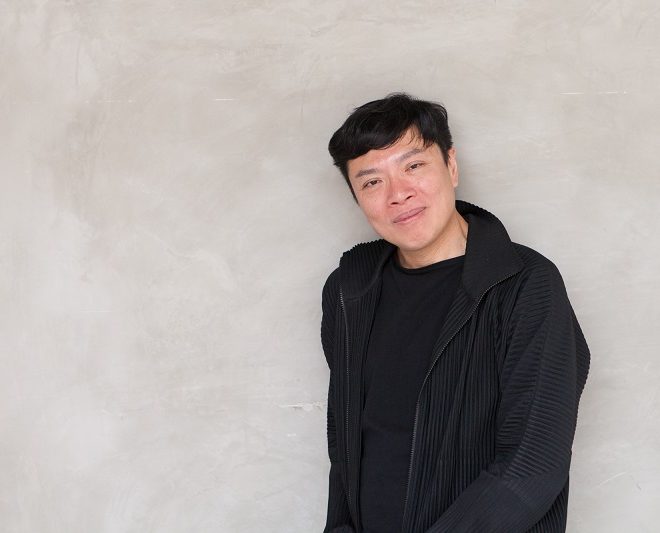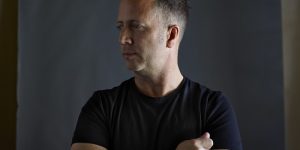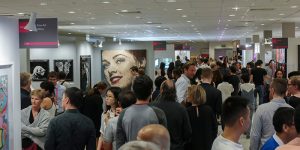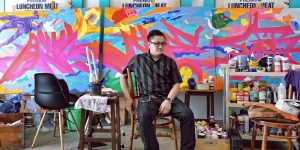Interview: Artistic Director Ong Keng Sen
Art Republik takes a look into the Singaporean art and theatre scene with Artistic Director Ong Keng Sen

Ong Keng Sen is a household name not only in the theatre and art community but also everywhere in Singapore and around the globe. He has revolutionized the way theater practice is in Singapore, propelling it through international avenues.
He is currently on sabbatical from his post as Artistic Director of Theatreworks while he is the Festival Director of the Singapore International Festival of Arts. As Board Member of Theatreworks, Keng Sen speaks to Art Republik candidly about the art and theatre scene in Singapore, and its place in the international arts.
What do you think of the Singapore art and theatre scene?
I think a lot of institutions, festivals, and venues here are ghettoising themselves by looking at only Singapore, Southeast Asia and Asia. This makes no sense to me. One cannot consider Asia without looking at America and Europe and other parts of the world. For example, what’s happening in Tokyo is as much affected by what is happening with ISIS, and what’s happening in Europe or New York with the rise of populism and conservatism worldwide. For me, these parts of the world don’t just function as a region. The regions are interconnected; we have to see them in a larger context. Therefore I feel that this kind of perception that we must program Southeast Asian or Asian arts is a very misguided way of thinking – you have stunted visions of Asia if you don’t consider Asia or Southeast Asia as part of the world.

Lear Dreaming, conceived and directed by Ong Keng Sen, toured to Theatre de la Ville in Paris in June 2015. (Image by Albert K.S. Lim)
Many of these spots in Asia are also not isolated and are connected to the world like Indonesia is presently preparing for a major festival in Belgium in 2017. In fact, they become themselves when they are relating to the world. I actually get comments from American and European artists that “Singapore is not interested in us, they are only interested in Asia & Southeast Asian artists”. To which I have to respond that it’s not actually true.
Our theatre writers are often not writing on things that are relatable outside of Singapore. Nobody here is writing about Syria, for example. Nobody is writing about migration in Europe or the search for home. Our topics here are very, very small – they are looking at traffic rage, that kind of issue!
But these questions are also relevant in Singapore, like immigration for example.
Yes they are, but our writers and artists are not looking at that kind of universality. What I am trying to say is that Singaporean artists are perhaps looking at foreign workers in Singapore in a very localised manner. However it is not just about foreign workers in Singapore but also about migration in the world. Migration is a world theme right now, and this kind of universality is not very prevalent in Singapore theatre and arts. I feel we are closed off, rather insular, looking only at Singaporean issues and often only in a Singaporean context.
Why do you think so? Is it because they don’t read enough or don’t travel enough or they are too comfortable in their little bubble? Or do you think they have to pander to the local audience?
I feel that generally our worldviews are not very big when we are in Singapore. Let’s take for example SG50 – it’s Singapore’s golden jubilee. But what does this 50th birthday mean internationally in the world? Is it about post-colonialism? Is it about changing the thinking about the periphery and the centre?? This idea of just celebrating your birthday can be petty in the larger sense of the world. I feel like we have to connect our conversations with the world and not just what’s happening here.

Performance stills from Lear Dreaming (Image by Albert K.S. Lim)
Did you see ‘Singapore: Inside Out’? (‘Singapore: Inside Out’ is an SG50 initiative aimed at broadening the international community’s perception of Singapore through a diverse presentation of our creative works.)
No. I was away. How was it?
I had no idea what the main concept was. I know they were trying to make it accessible to the public, but I felt that the way they placed art, music, and performance art all together diluted it.
Well, it’s often reversed in Singapore. There is too much concern about form. But where is the content? For me, I want to know what the content is and not only whether the form is accessible to the public. It’s similar to what I’ve heard many times about Singaporean films. “A lot of filmmakers here have the techniques to make the film, but they have no stories to tell.” Many of our filmmakers have the Hollywood techniques to make a glossy product. The challenge that faces Singaporean artists and Singaporean audiences (since they are directly related) is that the product looks ok, even good. But when you poke inside, there is no content. I didn’t see ‘Singapore: Inside Out’, but I do take that with a pinch of salt. ‘Singapore: Inside Out’ is essentially Singapore Tourism Board’s (STB) updated version of selling Singapore. That’s their job. Before that, STB used to tout Chinese opera or Malay dance, and now they have a more sophisticated way of selling Singapore. But basically it’s a sales pitch. I won’t go there expecting too much artistic content. I might find it, but I go there not expecting it.
What you were saying earlier about something looking good on the outside, but when you poke a hole there is nothing on the inside, that’s basically emblematic of Singapore. It’s fancy on the outside, but where is the meat and the soul of it?
More and more Singaporean individuals are moving away or staying away. You can see that in the recent controversy with Koh Jee Leong, a Singaporean poet who doesn’t want National Arts Council funding. He was listed in FT as one of the top poets to watch. He moved away.
Singapore is set up such that it is catering to a type of individual who wants to have a zone of comfort, a zone of convenience, where you make a lot of money, and then you go away and spend that money enjoying yourselves on holidays around the world. So it caters to a group of people. But there are many people who have things to say who have left, because there is little compatibility with what they are experiencing here. Then I ask myself this whole question of the ‘quitters’ and the ‘stayers’ (Writer’s note: this is a reference to a National Day rally address by former Prime Minister Goh Chok Tong in 2002, when he called people who emigrated from Singapore as ‘quitters’ and those who stayed in Singapore as ‘stayers’). Perhaps stayers are the people who stay here who want a certain lifestyle, not a very engaged lifestyle. Because if you want to be engaged, you’d run into borders where you’d be regulated, and you can’t say the things you want to say, so people who want to say things leave. But they are the ones who have quality and desire quality. So what you have left are the stayers who have already quit from engaging with life socio-politically.

Performance stills from Lear Dreaming (Image by Albert K.S. Lim)
Do you think that sets back discourse?
I think there is discourse within a group of individuals here. I am trying now to move beyond the present workers in the arts industry in Singapore. There are a lot of hardworking individuals in our industry. But as I speak with the younger generation, I am troubled that more and more young people want to leave. Some want to go away to study abroad and try it out for a few years. That’s the first step. Once a person studies abroad, they develop a mindset for what they can do and say with ease in Melbourne, New York or Berlin that you can’t in Singapore. So in the long term you get people staying who would be perhaps – this is a terrible way of putting it – quite mediocre. That’s why I am questioning this thinking that if you don’t like it, then leave. Then the best people will go; apart from the committed individuals who are working hard here, but this group is very small. So I am trying to look at the larger mass.
How would you increase that core group?
I think the policies we make right now are very important. To really create a general atmosphere of creativity, we have to think large scale. We need to produce creative individuals. I would like to see Singapore becoming a magnet for talent, individuals being attracted to Singapore because of its open, vibrant atmosphere.
Ironically, I do believe that right now we are going more and more conservative.
It was very interesting to see the call for application for the Finnish pavilion for the Venice Biennale 2017. They understand that the logic of exclusion and forgetting is part of the politics of creating a national identity. They understand that national identities are actually based on forgetting and excluding. The national identity that is created is not immediately positive. It is a selected preferential identity that is not always just and tolerant.
Therein lies the difference between Finnish and Singaporean history – Singapore is so afraid of alternative histories that are not the published history. Finnish history is looking for alternatives as a kind of diversity. In Singapore, you are told very consciously that you should not be creating alternative histories in the year of SG50. It means that there is a fear that you are generating different ways of thinking, individual ways of thinking. It’s a very real limitation. You are not going to have a dynamism for the future where there is push and pull between different realities and different viewpoints.

Performance still from Geisha. Conceived and directed by Ong Keng Sen. (Image by Kar-Wai Wesley Loh)
How is Theatreworks then looking into these alternate histories in its productions?
I do feel that the scene here is very much dominated by institutions. If we look at ST’s Life Power List 2015, many are running a festival or a museum. They are all National Big Money. Very few individual voices, very few individual artists, very few individual entrepreneurs. I think this then leads to the question of ‘what can independence do?’ In Singapore’s mainstream thinking, independents can be too small for the Public (with a capital P) to be interested. But we know that there are many publics out there and we should start to look at diverse independent voices as change agents.
I believe we should support what independent energy is creating in Singapore. I have international friends who ask me why are artists in Singapore afraid of losing state funding? And why should the state or the government be involved? Sadly, it’s actually a belief in Singapore that you can’t do anything without the government, it’s so centralised. You see that when you go for sponsorship. The corporate sponsors are only focused on you when the government has said let’s focus on art this year. The endorsement by the government is important even for private corporate sponsorship.
So to answer your question – what we can do as independent companies is to spot talent and to give these talents, space. Through that space, the talents will actually be nurtured. But very often these talents leave after a while. We had Choy Ka Fai here in Theatreworks who was an associate artist; after studying, he stayed on abroad. I feel that individuals are going to choose countries where there is quality of life. Quality of life includes dynamic expression, the ability to express yourself fearlessly, and not just a matter of affording a car and a house. Many people in New York can’t afford a car and a house, but they still live there, very fulfilled. Overall, Singaporean stayers have a certain way of thinking. As individuals who are committed to doing something here, we try to work around the edges and open up the space.

Performance still from Geisha. Conceived and directed by Ong Keng Sen. (Image by Kar-Wai Wesley Loh)
How old is Theatreworks? It just celebrated its major anniversary milestone.
Theatreworks started in 1985. So we are 30 years old. The company has evolved through the years. We started as a repertory company model, a precursor of Wild Rice. But then we moved very far away from that. We started one of the earliest Writers Laboratory in 1990, where we started encouraging Singaporean writing through active public readings called lab reports. We’d pay for practitioners to develop the plays. We would invest in professional actors rehearsing for these readings and then we will interface the works-in-progress with public audiences who gave feedback. This transformed the plays in very actual ways. We did a lot of exchanges in the region with the Philippines, Indonesia and Malaysia. And then we grew more internationally. We created lots of artists’ labs in Myanmar, Cambodia and Vietnam, and in that way, we became more and more international. We didn’t just invite artists from that country or this region but we invited artists from all over the world to engage with returning diasporas from Vietnam, with Cambodia after the civil war, with Myanmar after military dictatorship. We always say that we are an international company located in Singapore. The attitude is international, but we have our office and our roots here. And that has become the approach. Theatreworks developed from being a drama company doing four plays a year for subscription audiences. With our space 72-13, we opened it up to creative residencies. We are not a venue – we are a space, a home, a heart where we encourage young people and young artists to do something here.
Like what you said – spotting talent and providing a space.
We started to evolve into that by developing young theatre directors and we realised that it wasn’t enough, as our approach is interdisciplinary. So we started residencies with visual artists, with dancers, etc. and it just kept growing that way.
And how do you feel about the growth in Singapore art? How do you see art and theatre development over the past 30 years?
I think there is a natural evolution of an ecosystem. You don’t have a healthy system if you have no succession and if there is nobody working on the next generation. Actually it’s more important that they leave us to chart their own trajectories. There is no ecosystem if you don’t develop a language of discourse with the audience or cultivate a sense of ownership in them. For us, at 72-13, we do not bemoan the fact that the audiences are small, if they are all individually committed and thoroughly engaged. That’s more important for us. In Theatreworks, we are not interested in touristic audiences, audiences who just come and go. We want our audience to be in a constant dialogue so that they can also say what they like, what they don’t like, and why they don’t like it. So for me, this is developing an ecosystem between the flow of the art from artist to the audience and back from the audience to the artist. The ecosystem is a cycle of engagement. It’s not a matter of an audience watching from the corner and not being engaged.

Performance still from Geisha. Conceived and directed by Ong Keng Sen. (Image by Kar-Wai Wesley Loh)
You recently made a controversial statement.
Which one? I say so many controversial things.
The one about the arts in Singapore moving two steps forward and then taking three steps backwards.
Yes, and then someone corrected my mathematics that we are therefore not staying still, we’re essentially moving backwards!
So are we really moving backwards and the ecosystem is regressing? Is that in theatre or in art as well?
I feel that when we produce something in Singapore, we really need to look at the core content. Because there is a lot going on – there is marketing, there is strategizing, and there is politics. You need to have the quality – that is in the pudding itself – how is this film, how is this book, how is this theatre production. But where is the content? As I said, I would like to raise the bar generally and not in one artist or a few companies.
I don’t believe in marketing per se. I don’t believe for example that we need to go to a writers’ festival and hear interesting anecdotes, music playing. For me, I’m interested in the content of the book. I am not interested in hearing what the writer thinks about the book. That’s PR, marketing, strategizing. The writer is already speaking through his or her book. It’s not a matter of how he presents himself to the audience. There is a major difference between the core content of the work, and the marketing of the work.
I think this very often gets confused in Singapore. In the sense that everyone is going ra-ra-ra, it’s a great thing. Then you go yourself and you ask what’s happening here? There is so much build-up, too much investment in the hype of marketing.
Singapore is really airbrushing itself. But of course in the topic of theatre and art, it’s a very challenging context here. There are artists who want to expand beyond the core group. But I would say that the authorities allow only certain expansions. If you were expanding in terms of provocative thinking, then you’d be rapped on your knuckles. If it’s just entertainment, then you’d be very much encouraged. There are many grants to help you entertain. You can see the brain drain, because talent goes to the places where they are free. Talent will not stay where they are controlled. The talents know they have talent. They know they can go anywhere in the world. And if Singapore continues to be very controlled, talent would all seep out.
Story Credits
Text by Amelia Abdullahsani
This article was originally published in Art Republik









